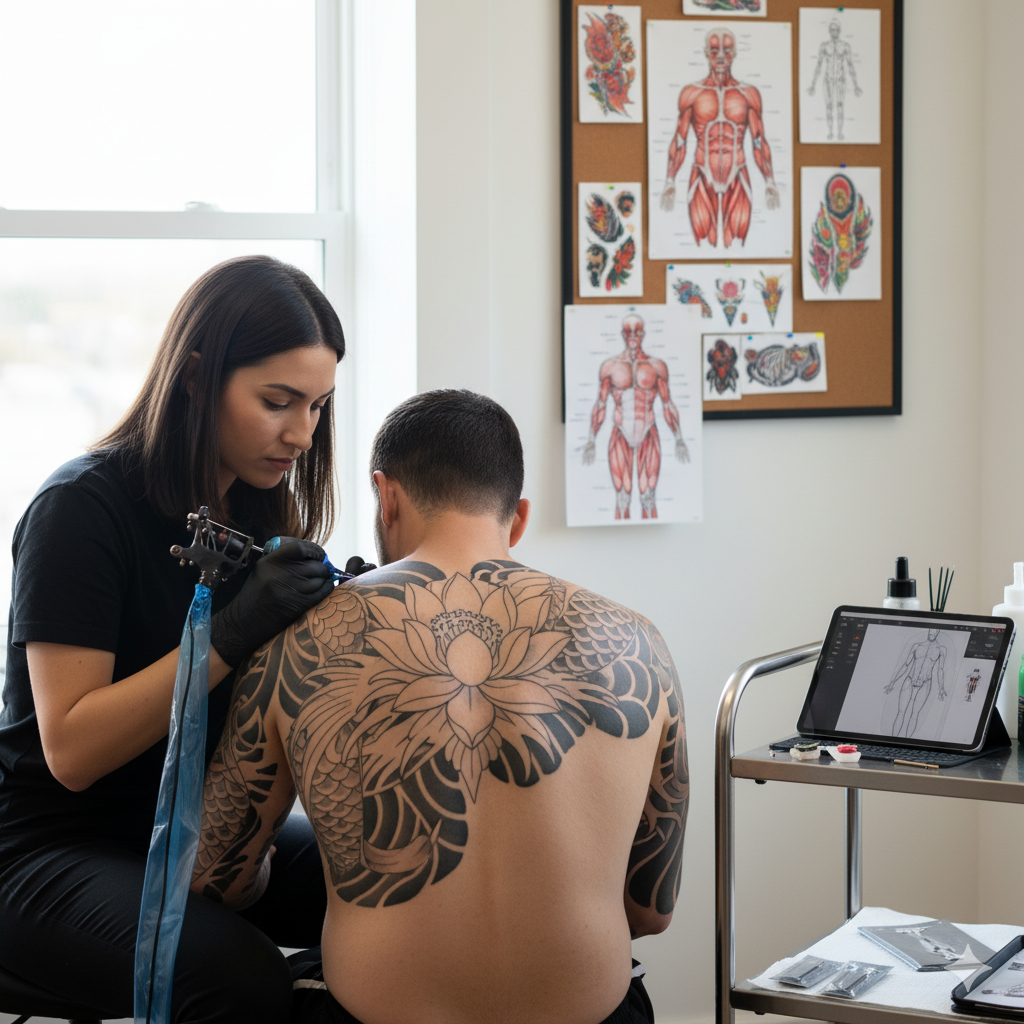It goes beyond technical accuracy to intuitively sense the balance, equality, and flow of the obstruction of the human body to produce the tattoos that add to the human form. All these factors make sure that the fitting of each design is in unity with the client’s body, which adds beauty as well as motion.
Some of the critical questions that seek to examine how tattoo artists arrive at such critical artistic instincts will be listed below.
1. Why Are Proportion and Symmetry Essential in Body Art?
Visual proximity and balance through proportion and symmetry are what are used to make sure that tattoos add to the body lines and not ruin them. The right proportions make the design fit perfectly through the muscles and joints, and symmetry makes the design stable, which is much needed in the central areas such as the chest or the back.
With all these factors taken care of, the painting creates a unified appearance in all directions. The tattoo needles from Australia or other places can be useful for starting the exercise.
2. How Do Artists Train Their Eyes to Recognize Proper Proportion?
Artists estimate their sense of proportion by practicing regular drawing, studying anatomy, and being repetitive with designs. A lot of practice is involved in drawing human anatomy in various angles so as to learn the body curvature in regards to maintaining space. Stencils and grid systems can also assist beginners in understanding relationships of sizes before they take hip-hop tools and place them with the hand on the skin.
3. What Techniques Help Achieve Natural Flow in Tattoo Designs?
Flow is a movement created by the tattoo design along with the body structure and movement. The artists create this by matching trends formed within muscle lines, bone lines, or traditional lines.
The trim of explaining techniques, mirroring especially the use of curved lines and placement of the composition directionally, enables the tattoo to feel dynamic and natural, particularly on sleeves or the pieces placed on the entire back.
4. How Does Studying Human Anatomy Enhance Artistic Control?
Learning anatomy assists artists in seeing the placement of a tattoo and how it will wear out on living skin. Learning about the muscles, joints, and bone arrangement will enable artists to estimate the way the designs stretch or contract when they are used in movement. This awareness is an important aspect of the anatomy that avoids distortion and enhances every tattoo enhances but never challenges the physique of the client.
5. What Role Do Stencil Placement and Mapping Play in Symmetry?
Prior to tattooing, a check in terms of alignment and spacing is done by stencil mapping on the part of the artist. They tend to regard the body as a canvas 3D, where they use the collarbone, shoulder joint, or the spine as a reference point.
In symmetrical objects, calipers or software drafting programs may be used to aid in spacing and readability to ensure that a person will apply no ink to the picture. The tattoo needles from Australia or from others can help in mapping.
6. How Can Artists Improve Their Visual Flow and Design Adaptability?
The perception of flow can be improved by research on tattooists on the various forms of tattoos, including Japanese, or a biomechanical work of art, which focuses more on motion and composition.
These designs can be easily discussed by analysing frequently how the designs follow muscle lines or similarities to organic motion, which helps build visual adaptability. With time, the artists develop the skill of visualizing their drawings on the plane sketches that would be translated to the curved surfaces.
